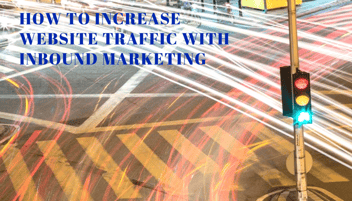We can all agree that the work of a sales team is vital, and that making their job easier will have a positive impact on your business.
This article shows how effective content marketing can empower your sales team, giving them the tools they need to attract more leads and close more deals. We'll cover things like creating a bank of top quality content, delivering it through different formats, and automating parts of the outbound process to maximise human resource.
You can expect more leads, more efficiency, and more closed deals after actioning the insights in this guide.
How content marketing can help your sales reps
The goal of content marketing is to create and distribute content which explains, promotes, and generates interests in your products and services. This content is created with specific marketing goals in mind, and is aligned with the needs and interests of target demographics.
Content marketing can help your sales reps by increasing traffic, to expand their pool of potential prospects; and by increasing conversion rate, to raise the number of leads.
With those goals in mind, the next sections explore how content marketing can:
- Generate inbound leads
- Facilitate effective outbound marketing
- Empower your sales team to close more deals
How content marketing generates inbound leads
Content acts as a touchpoint for people to interact with your business. Creating regular and high quality content on your site increases the number and usefulness of these touchpoints, and active marketing efforts can increase their reach and engagement.
Hosting content on your website will attract some traffic naturally, especially if you already enjoy good rankings and organic visibility. Active promotion of content will increase traffic, and conversion rate optimisation (CRO) will increase the ratio of people who engage in a way that marks them as a lead.
The traffic attracted by content marketing efforts will engage with your site in different ways. Some people will read an article then leave. Others will read an article and dig deeper into your site, trying to build an understanding of what you offer. Others still will take an active step to get more information: these people might sign up for a newsletter, a webinar, or request to download a resource.
Each of the above is theoretically a lead in that they have engaged with your business in some way. But allocating sales team resource to people who visit one page and disappear is hardly a good investment of time. Instead you want to allocate resource to prospects who have demonstrated an interest in your business.
How content facilitates effective outbound marketing
In the context of content marketing, outbound marketing involves sharing content with prospects and leads with the aim of moving them further along the buyer journey. This can be done through advertising and outreach, either manual or automatic. A solid bank of content facilitates effective outbound prospecting and upselling by making it easier for your sales team to respond to new or changing needs amongst existing customers and prospects.
We mentioned touchpoints before - content acting as different points of entry for inbound traffic. This idea can be leveraged via outbound, too: by promoting content to people in the places they are looking for information to help solve a problem, content can act as an introduction to potential solutions offered by your business. Depending on the exact query a prospect is looking to solve, different content and formats can be served.
If they have a top level query like "what is SEO", for example, a blog post outlining the basic concept of an SEO agency may be helpful. If they are further along the buyer journey and are looking to commission the services of an SEO agency, case studies and testimonials showcasing your ability and credibility may be more suitable. The former plants a seed that may grow as the prospect learns more about SEO and realises they'd like to work with an agency; the latter aims to convince them that yours is the best choice.
Your sales team can be more confident in their outbound efforts if they are able to direct prospects to content which is laser-targeted to the specific query they have at that moment in time.
It's worth noting that outbound marketing does not have to be manual. Several automated techniques exist which can deliver content to prospects automatically, with chatbots being a perfect example. These artificial intelligences learn about a prospect via conversation, then direct them to content which is most likely to address their needs. Automated workflows are another example: chains of emails which are triggered by a user action, such as joining a newsletter, which send content to provide value and moves prospects further along the buyer journey.
The content and logical progressions of chatbots and workflows are determined by humans, but once they're activated they make your content work hard and smart all the time.
How content empowers your sales team to close more deals
To close a deal, your sales rep need to convince the prospect that your business offers the best solution to their current needs.
This could be a case of convincing them that your price is lower than competitors, it could be a case of convincing them that retaining your services for 12 months will deliver stronger returns than any other competitor, or it could be anything in between.
The more convincing has been done before the conversation with your sales rep, the easier the deal will be to close.
Think of a cold call: you attempt to convince a prospect, from scratch, of the following things:
- They should listen to you instead of hanging up
- You are aware of a genuine need they have
- You are offering a genuine solution to this need
- Your solution is better than any current solutions they may be exploring
- Your solution is worth their time and effort in becoming familiar with
- They should convince the personal responsible for spending money, on your behalf, to invest in your solution
Content marketing is a way for each of these points to be addressed before your sales team even pick up the phone or write an email. An effective content marketing strategy will address the needs of prospects at all stages of your buyer journey. It will present legitimate solutions to these needs, and will explain why they are effective and how they will lead to return on investment for customers. Ideally they will demonstrate why these solutions are preferable to others being offered by businesses operating in the same niche. All of these goals combine to lay a solid groundwork which your sales team can operate from, rather than burdening them with the expectation to convince someone from scratch.
A larger bank of content which engages with prospects at a range of touchpoints increases the likelihood that a lead is aware of and familiar with your business.
How to maximise the effectiveness of your content
To make content as effective as possible there should be dialogue between your sales team and the team creating content. Make sure the sales team have the opportunity to give insight into questions they are asked, and issues they often come across when closing deals. Then bake these insights into a content strategy.
The subsequent content strategy should include multiple formats, each designed to appeal to different users needs. Reliance on one format risks limiting information and engagement.
- High quality product and service pages should outline their benefits, and should demonstrate specific solutions to specific problems
- Relevant and high-value content should be tailored to specific steps in the buyer journey, and should address corresponding user needs. Things like blog articles, ebooks, whitepapers, reports, tools, videos, infographics, and so on.
- Webinars, support emails, chatbots, and similar should be used to provide discussion-based information in real time.
Combining all of these formats create a content ecosystem where pieces of content support and strengthen each other.
Content should be tailored to and optimised for sales activities. It should be benefit led, and should clearly communicate the reasons why yours is the right solution to their needs. Remember what we said about groundwork before: sales-led copy should be designed to convince people of the merits and necessity of your solution.
Take a look at our content marketing service page if you want to get a feel for good landing page copy.
All of these considerations should be retroactively applied to existing content, as well as baked into all ongoing content. While it is time consuming bringing old content up to the standard advocated here, the opportunity to make it perform better makes a good incentive.
If you are using HubSpot Sales Professional you will have access to certain tools and features whose power can be enhanced by effective content marketing:
- Email sequences and conversational bots have a wider range of content to offer, meaning automated outbound marketing efforts (discussed above) have a broader appeal.
- The ability to create multiple workflows is especially powerful with a larger bank of content, as the workflows can be more bespoke.
- Contact management can keep a detailed record of which content each contact has interacted with, painting a clearer picture of their understanding of your business offering.
- Contact management can also give more granular information on the needs of specific contacts, the solutions to which can be baked into future content strategy.
Most importantly: don't assume that if you build it they will come. Make sure content exists for a reason, addresses a genuine need, and is in a format that users can find and engage with.
So, to conclude: content marketing can make life easier for sales reps.
It gives them the tools they need to convince more prospects and close more leads. By including sales in the creation of a content strategy, their insights, and by extension the needs of prospective customers, can be baked into and addressed by all ongoing content.
Retroactive optimisation of existing content and smart creation of ongoing content will translate into more leads, more efficiency, and more closed deals.




